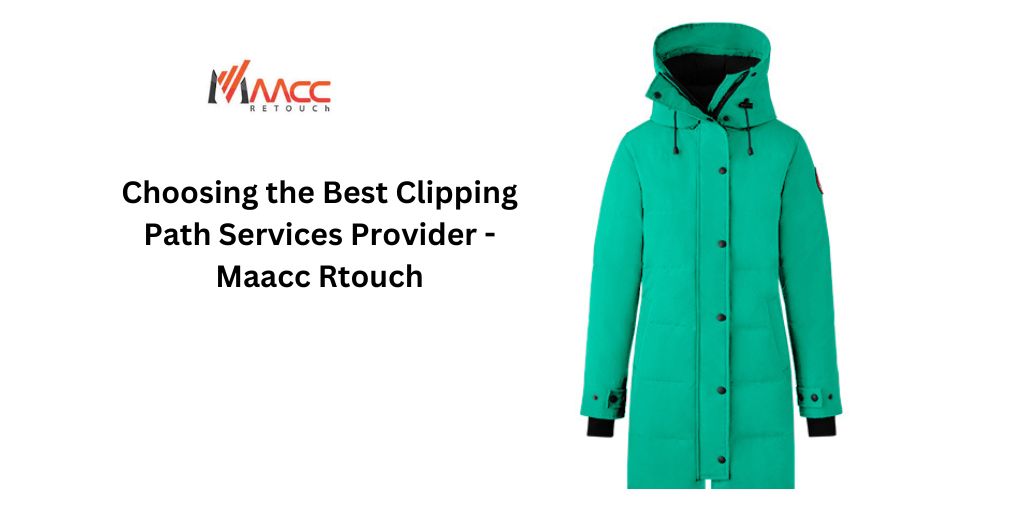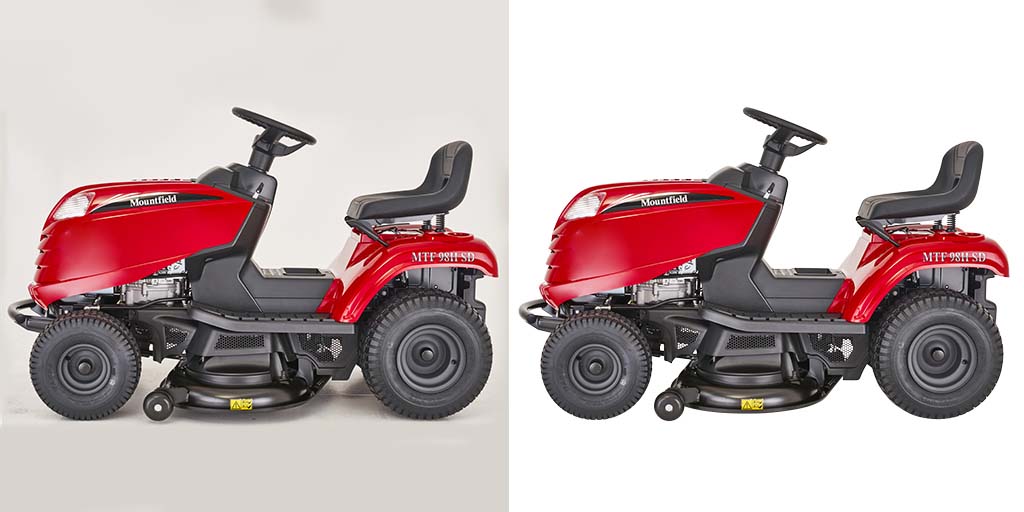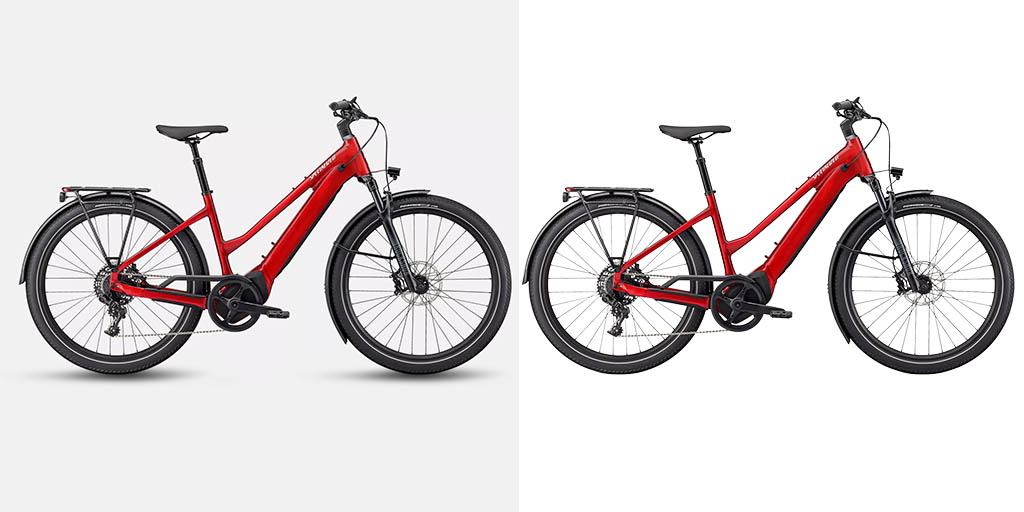In the era of online shopping and digital marketing, modern product photography has emerged as a crucial aspect of business strategy. It’s a dynamic mix of art and science, where creativity meets technical expertise to produce high-impact images that capture the essence of products. Incorporating advanced techniques such as strategic lighting, unique angles, post-production editing, and even 3D rendering, modern product photography goes beyond mere representation. It seeks to highlight the product’s best features, evoke an emotional response, and create a narrative around the brand.
Modern product photography is a blend of creativity and technology, aiming to create visually appealing images that highlight product features and tell a brand’s story. This practice utilises advanced techniques such as lighting, angles, and editing to capture high-quality photos that attract, engage, and ultimately persuade consumers to make a purchase in today’s highly visual and competitive marketplace.
What is Product Photography for eCommerce?
Product photography for eCommerce involves creating high-quality images of products to be sold online. These images are typically used on eCommerce websites, social media platforms, and digital marketing materials to attract potential customers and provide them with a clear understanding of what they’re purchasing.
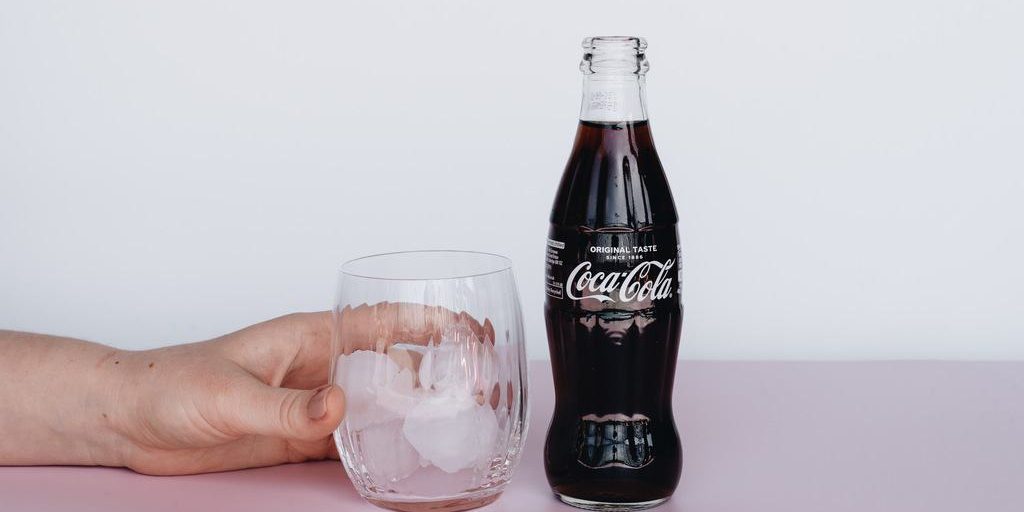
Given that online shoppers cannot physically see or touch the product, the images should accurately represent the product’s size, colour, material, and other key features. This is why eCommerce product photography plays a crucial role in the online shopping experience and can significantly impact a business’s sales and brand image.
Key Elements of eCommerce Product Photography

High Resolution
Images should be high-resolution to enable customers to zoom in and see the product’s details clearly.
lighting
Good lighting is essential to accurately represent the product’s colors and details. This could be natural light or studio lighting, depending on the product and the desired effect.
Background

A clean, usually white, background is often used in eCommerce product photography to ensure the focus remains on the product.
Multiple Angles
Products should be photographed from multiple angles to give customers a comprehensive view of what they’re buying.
Context Shots
These are images of the product being used in its intended environment or alongside complementary products. They help customers understand the product’s size and how it can be used.
Detail Shots
Close-up images that highlight the product’s unique features, textures, or intricate details.
Professional product photography can greatly enhance the perceived value of a product, build customer trust, and increase conversion rates. Therefore, investing in quality product photography is essential for any eCommerce business aiming to succeed in the competitive online market.
Evolution of Modern Product Photography
Product photography has significantly evolved over the years, driven by technological advancements, changing consumer behavior, and the rise of online shopping. Let’s walk through the key stages in the evolution of modern product photography:
Early Days: Film Photography
Film cameras dominated the early days of product photography. Photographers needed a deep understanding of lighting, composition, and camera settings, as there was no way to preview or edit the image before it was developed. This period was characterized by meticulous planning and setup.
Transition to Digital
The introduction of digital cameras in the late 20th century marked a significant shift in product photography. Digital cameras made the process more forgiving and flexible, as photographers could instantly review their images and make adjustments as needed. This also allowed for greater experimentation and creativity.
Mobile Photography

The development of advanced cameras in smartphones has transformed product photography yet again. Businesses could now take decent product photos without investing in expensive camera equipment. This democratization of product photography led to a surge in user-generated content and influencer marketing.
Future: AR and VR
The future of product photography lies in augmented reality (AR) and virtual reality (VR). These technologies offer interactive and immersive shopping experiences, allowing customers to visualize products in their own space or in a virtual environment before making a purchase.
Technological advancements have characterized the development of contemporary product photography by making the procedure more effective, accessible, and creative. creative. As technology continues to evolve, we can expect further transformations in the field of product photography.
Why Is E-commerce Product Photography Important?

In the realm of eCommerce, product photography is essential for several reasons:
1. First Impressions Count
High-quality product photos are often the first interaction a potential customer has with your product online. They should be appealing and professional, as they play a significant role in shaping the customer’s first impression of your brand and product.
2. Builds Trust and Credibility
Clear, detailed, and accurate product photos can help build trust and credibility with your audience. They show that you’re committed to providing as much information as possible and that you stand by the quality of your products.
3. Provides Product Details
Online shoppers rely heavily on product photos to understand the product’s features, size, color, material, and functionality. Providing photos from different angles and close-up shots of specific features can provide these important details.
4. Influences Purchase Decisions
A compelling product photo can strongly influence a customer’s purchase decision. If a product looks good in the photos and the photos highlight the product’s value and benefits, customers are more likely to buy.
5. Enhances User Experience
High-quality product photos, along with a well-designed website and compelling product descriptions, contribute to a positive user experience, which can increase customer satisfaction and loyalty.
6. Social Media Ready
Great product images are also social media-ready. They can be used in promotional posts or ads on platforms like Instagram, Facebook, Pinterest, and more, helping to increase brand visibility and attract more potential customers.
In conclusion, eCommerce product photography is not just about taking pictures of products. It’s about accurately and attractively representing products, building trust with customers, and ultimately driving sales. Investing in high-quality product photography can significantly enhance your eCommerce business’s success.
Tips for Taking High-Quality Product Photos
Creating top-notch product photos is an art that can significantly enhance your eCommerce website. Here are some tips to help you capture great product images:
1. Use a Good Camera
While smartphones today have great cameras, a professional DSLR or mirrorless camera can give you more control over settings like aperture, shutter speed, and ISO, helping you capture higher-quality images.
2. Pay Attention to Lighting
Lighting is arguably the most critical factor in photography. For product photos, soft, diffused lighting works best as it evenly highlights the details of the product. Natural light can work well, but if you’re shooting indoors or lack good natural light, consider investing in some softbox lights.
3. Use a Tripod
To ensure sharp, consistent images, use a tripod. This is especially important if you’re shooting in lower light conditions where the camera shutter needs to be open longer.
4. Shoot Against a Neutral Background
A white or other neutral background is standard in product photography as it draws attention to the product. You can purchase a photography backdrop or create your own with white paper or fabric.
5. Capture Multiple Angles and Details
Showcase your product from multiple angles and focus in on specific details to give your customers a comprehensive understanding of what they’re buying.
6. Use the Right Image Dimensions
Ensure to use the right image dimensions and aspect ratio as specified by your eCommerce platform to ensure your photos display correctly.
7. Post-Processing is Essential
Using software like Adobe Photoshop or Lightroom, you can edit your photos to correct color, adjust lighting, remove any blemishes, and ensure the product is represented accurately and attractively.
8. Consistency is Key
Maintain consistency in your product photos, especially if they’re being displayed together. This includes consistency in lighting, angles, color, and style.
9. Test and Experiment
Don’t be afraid to experiment with different setups, backgrounds, and styles to see what works best for your product and brand. Photography is a creative endeavor, so try out different things and see what works best.
Remember, high-quality product photography requires practice and patience, but the payoff in terms of increased customer trust and sales is well worth the effort.
Tools For Product Photography
To create professional-quality product photos, you’ll need more than just a camera. Here’s a list of essential tools that can help you achieve the best results:
1. Camera
A Digital Single-Lens Reflex (DSLR) or a mirrorless camera is ideal for product photography because it delivers high-quality images and offers complete control over settings like shutter speed, aperture, and ISO.
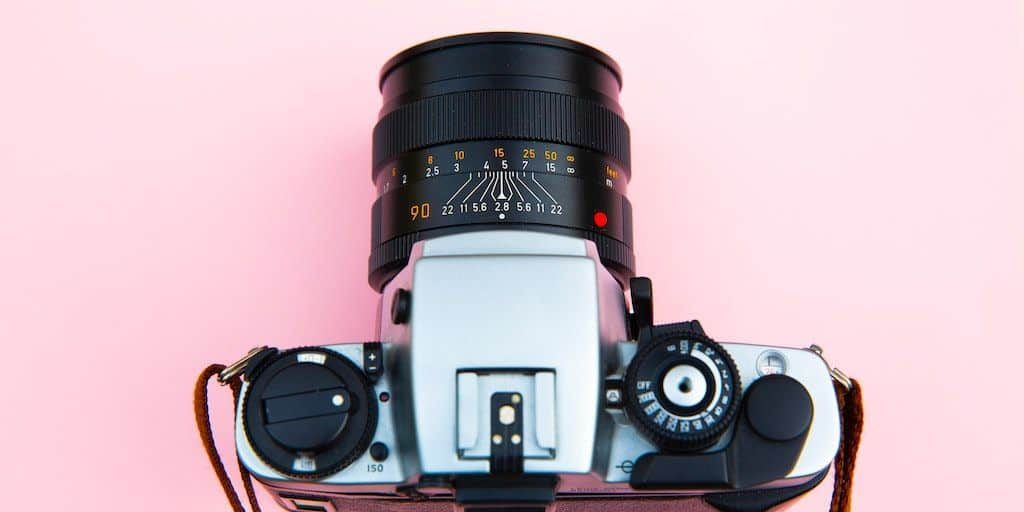
2. Lenses
Different lenses can provide different perspectives. A macro lens is great for detail shots, while a 50mm or 85mm lens is typically good for product photography.
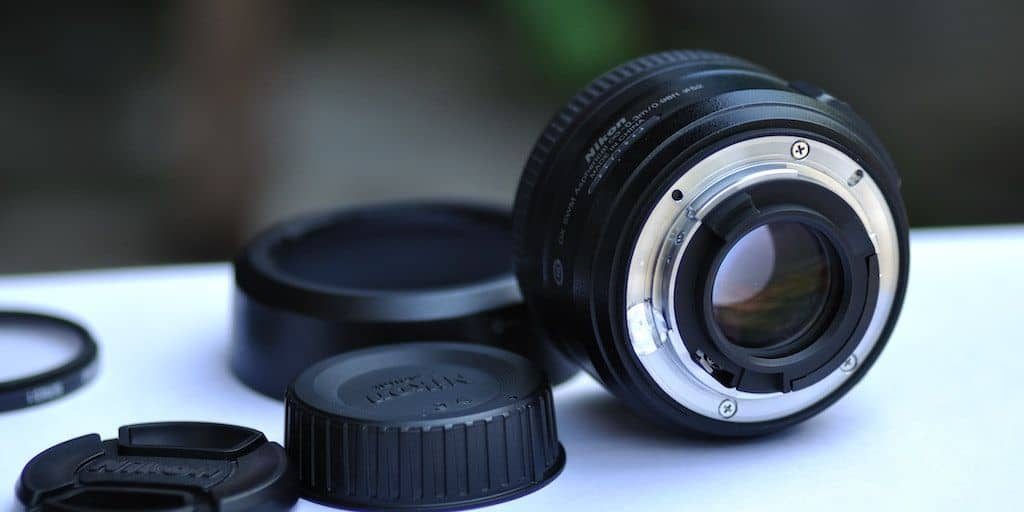
3. Tripod
A sturdy tripod is essential to eliminate camera shake and ensure sharp images. It also allows for consistency when shooting multiple products.

4. Lighting Equipment
Proper lighting is crucial in product photography. This could be natural light or artificial light sources like softbox lights or umbrella lights.
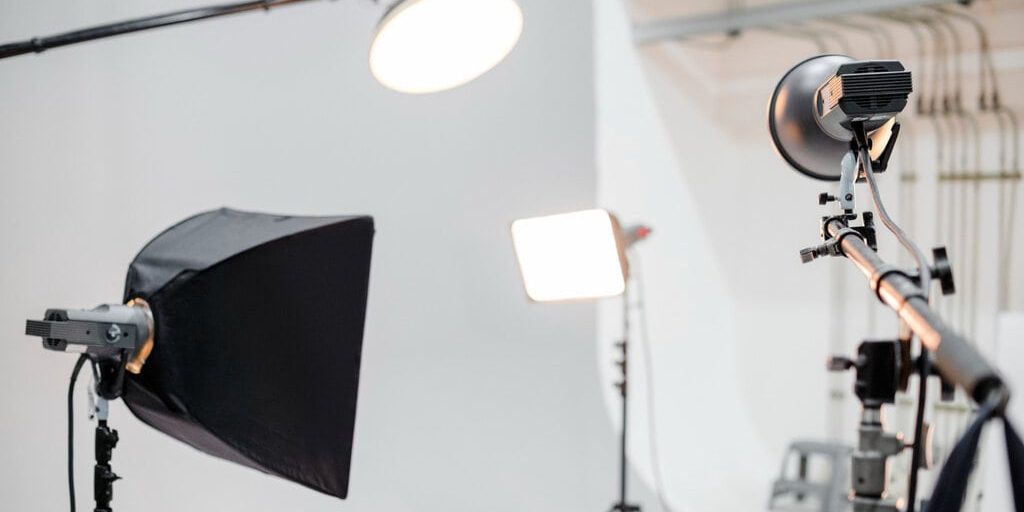
5. Reflectors and Diffusers
Reflectors help bounce light onto the product to eliminate harsh shadows. Diffusers, on the other hand, are used to soften harsh light.
6. Light Box
A light box or tent can be especially useful for smaller products. It provides a clean, uniform background and allows for control over lighting.
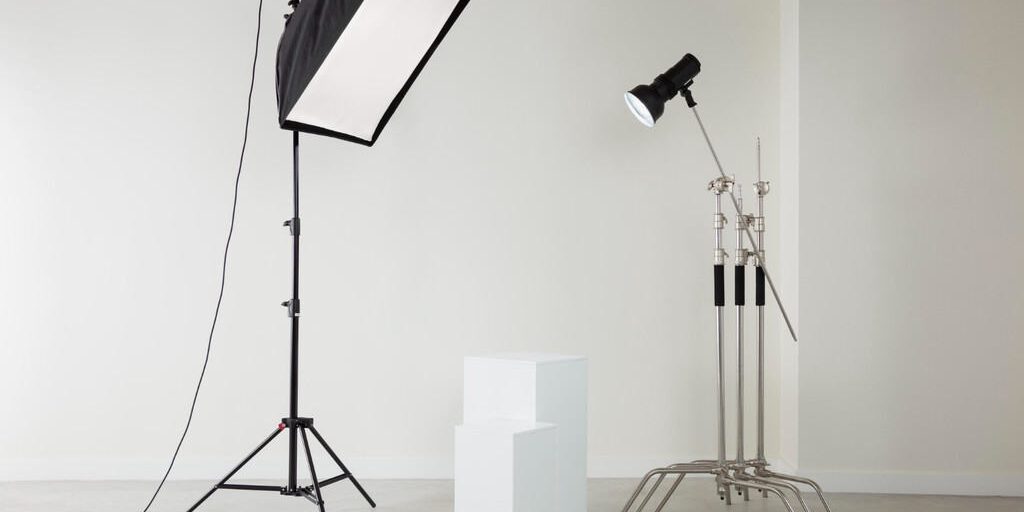
7. Backdrops
Having backdrops in various colours and textures can help you quickly change the look and feel of your images. White is the most commonly used backdrop in product photography.
8. Props
Depending on what you’re shooting, props can help to give scale, suggest uses, or enhance the visual story of your product photos.
9. Photo Editing Software
Programs like Adobe Photoshop and Lightroom are essential for post-processing. They can help adjust lighting and colours, remove imperfections, and add the final touches to make your product images look professional.
10. Color Checker
A colour checker can help ensure colour accuracy in your photos, which is especially important in product photography, where accurately representing the product’s color is crucial.
These tools, when used correctly, can help you produce high-quality and consistent product images, enhancing your brand’s credibility and boosting sales.
How Can We Take Good Ecommerce Product Photos?

Applying basic composition techniques can greatly enhance the visual appeal of your product photos. Here are three simple yet effective techniques:
1. Rule of Thirds
The rule of thirds involves dividing your image using 2 horizontal and 2 vertical lines, creating a 3×3 grid. The idea is to place the important elements of your product along these lines, or at the points where they intersect. This technique can make your images more balanced and visually interesting.
For product photography, you could place your product along one of these lines, or use the intersections to highlight key features of the product. Remember, the centre square isn’t always the best place for your product, and off-centre compositions can often be more engaging.
2. Leading Lines
Leading lines are used to direct the viewer’s eye to the main subject of the image, in this case, your product. These lines can be anything from the edge of a table to the shape of the product itself. They create a path from the edge of the frame to the product, making the viewer naturally focus on it.
For example, if you’re shooting a bottle of wine, you could use the shape of the bottle as a leading line, guiding the viewer’s eye from the bottom to the top of the bottle.

3. Negative Space
Negative space refers to the empty or open space around the subject of an image. By incorporating negative space in your product photos, you can make your product stand out more and create a more sophisticated and clean look.
This technique is particularly effective for minimalist product designs and works well on eCommerce platforms where the product is the sole focus.
By mastering these composition techniques, you can create more compelling product photos that not only showcase your product’s features but also tell a visual story that engages your audience.
20+ Creative Ideas for Modern Product Photography

Let’s dive deeper into some of these creative ideas and discuss why they can be so effective in product photography:
1. Use Bold Backgrounds
Bold backgrounds can help your product to stand out. For example, if you have a product with a neutral colour, placing it on a vibrant, contrasting background can make the product “pop” and immediately draw the viewer’s eye. Experiment with different colours and patterns to see what works best with your product.
2. Play with Shadows

Shadows can add depth and interest to your product photos, making them look more three-dimensional. You can manipulate the lighting to cast shadows that create striking patterns or highlight specific aspects of the product. For example, a long shadow on a minimalist product can add an intriguing element to the photo while keeping the focus on the product itself.
3. Incorporating Props
Props can enhance the storyline of your product. They can provide context about how the product is used, or add an aesthetic element that complements the product. However, be careful to choose props that don’t distract from the product. For instance, if you’re selling a coffee mug, a prop could be a coffee table book or a spoon, something that complements without stealing the spotlight.
4. Try Flat Lay Photography

Flat-lay photography involves arranging objects on a flat surface and photographing them from directly above. This style is particularly popular in fashion, food, and lifestyle product photography. It gives a unique perspective and can be used to create a neat, organized image that includes your product along with related items, creating a complete narrative for the viewer.
5. Use Reflections
Shooting your product on a reflective surface like a mirror or glass can create an interesting effect and add a touch of elegance.
6. Experiment with Scale
Playing with scale can create intriguing and eye-catching images. You could use miniature props or shoot your product next to an object that exaggerates its size.
7. Create a Series
Shoot a series of images that show your product from different angles, or in different stages of use.
8. Go Monochrome
A monochromatic colour scheme can create a visually cohesive and striking image.
9. Use Natural Elements
Incorporate natural elements like plants, rocks, or water to give your photos a fresh and organic feel.
10. Showcase the Product in Use
Show people using your product. This not only shows the product’s purpose but also helps consumers visualize themselves using it.
11. Try Silhouettes
Silhouette images can be dramatic and striking. Shoot against a bright background with the product in the foreground to achieve this effect. While this might not work for all products, it could be a creative way to hint at a new product launch.
12. Show the Manufacturing Process
If it’s feasible, showing the product being made or the craftsmanship involved can create an engaging narrative for your product.
13. Use Geometric Shapes
Incorporate geometric shapes in your composition for a modern, eye-catching look. This could be through props or the arrangement of multiple products.
14. Create a Mood with Lighting

Different lighting can create different moods. Experiment with hard and soft light, coloured light, or dramatic shadows to convey a particular atmosphere.
15. Experiment with Textures
Using different textures in your background or props can add depth and interest to your images. Consider materials like wood, fabric, metal, or paper with various textures.
16. Incorporate Movement
Showing movement can make your images more dynamic and exciting. This could be a splash of liquid, a flying piece of fabric, or a hand interacting with the product.
17. Showcase Details
Close-up shots showcasing the texture, material, or unique features of your product can give customers a more comprehensive understanding of the product.
18. Experiment with Perspective
Try shooting from unusual angles or perspectives. This can make your product photos more intriguing and different from the norm.
19. Use Complementary Colors
Using a colour scheme based on complementary colours can make your product stand out and create a visually pleasing image.
20. Highlight the Packaging
If your product has unique or appealing packaging, make sure to highlight it in some of your images.
21. Tell a Story

Create a narrative around your product. This could be a day in the life of your product, or how your product solves a problem.
Each of these ideas can help you approach product photography more creatively, making your product images more engaging and appealing to customers. Just remember to keep the focus on the product and ensure the images accurately represent it.
8 Tips to Conquer eCommerce Product Photography
Master eCommerce product photography with these eight tips, covering everything from lighting and camera choice to post-production editing and consistency.
1. Use a Lightbox or Studio Setup
A lightbox helps create a uniform background and provides controlled lighting. For larger items, a studio setup with softbox lights can produce similar results. These setups can help eliminate unwanted shadows and highlight the product’s features.
2. Invest in a Good Camera
High-quality images require high-quality equipment. Investing in a good DSLR or mirrorless camera can significantly improve the quality of your product photos. If a professional camera isn’t in your budget, a modern smartphone camera can also produce impressive results.
3. Focus on the Product
The product should be the clear focus of the image. Avoid cluttered backgrounds or props that could distract from the product. If using props, they should complement the product and add to its story, not divert attention away from it.
4. Experiment with Angles
Different angles can highlight different features of a product. Experiment with various angles to find the ones that best showcase your product. Be sure to include front, back, and side views, as well as any important details.
5. Use a Tripod
A tripod can help ensure your camera remains steady, resulting in sharper images. It also allows you to easily shoot from different angles while maintaining consistent framing and focus.
6. Post-Production Editing
Use photo editing software to fine-tune your images after shooting. You can adjust aspects like brightness, contrast, saturation, and sharpness, as well as remove any blemishes or distractions. Remember, the goal is to represent the product accurately, not to mislead customers.
7. Consistency is Key
Maintain consistency in your product images. This includes consistency in lighting, angles, and editing style. Consistent images provide a more professional and cohesive look to your online store.
8. Use Models or Scale References
For products like clothing or jewellery, consider using models. This can help customers visualize the product in use. For other products, include a reference object for scale to help customers understand the actual size of the product.
What Are the Benefits of Taking Good Ecommerce Product Photos?

Good e-commerce product photos can boost sales, enhance brand image, reduce returns, improve customer experience, increase social shares, improve SEO, provide a competitive advantage, and enhance ad performance.
1. Boosts Sales
Quality product photography directly correlates with e-commerce sales. High-quality images provide customers with a better understanding of the product’s look and feel, which can significantly influence their purchasing decisions. Clear, well-lit, and detailed photos make the product more desirable and the brand more trustworthy. This enhanced visual appeal and credibility can trigger an emotional response, encouraging potential customers to convert into actual buyers, thereby driving sales.
2. Enhances Brand Image
Top-notch product photos contribute to shaping a strong, professional brand image. Uniformity in quality across all product images on your e-commerce platform can project a sense of reliability and dedication to quality. This consistency, in turn, fosters a positive perception of the brand, attracting more customers, fostering customer loyalty, and increasing repeat purchases.
3. Reduces Returns
Detailed and accurate product photographs can significantly reduce return rates. When customers have a clear and comprehensive understanding of a product through multiple images covering various angles and details, the chances of the product meeting their expectations increase. This accuracy reduces the likelihood of post-purchase dissatisfaction and resultant returns, saving businesses from the logistical and financial burdens associated with product returns.
4. Improves Customer Experience
High-quality product photos enhance the overall customer experience by enabling informed purchasing decisions. Good photographs provide a virtual touch-and-feel experience that replicates the physical shopping experience as closely as possible. This transparency not only leads to higher customer satisfaction but also builds trust and credibility for the brand.
5. Increases Social Shares
Well-crafted product photos are more likely to get shared on social media platforms, acting as free advertising. A visually appealing image can captivate audience attention, encourage social sharing, and increase brand visibility. This organic reach can attract potential customers and drive traffic to your e-commerce site, leading to increased sales.
6. Improves SEO
Optimized product images can significantly improve a website’s SEO. By including relevant alt text and keywords in your image files, you can enhance your website’s visibility on search engines. This increased visibility can drive more organic traffic to your e-commerce site and boost sales.
7. Competitive Advantage
In the crowded e-commerce marketplace, high-quality product photos can provide a significant competitive advantage. They can help your products stand out among the competitors’ offerings, attract potential customers, and increase conversion rates. This differentiation is crucial to capturing market share and driving business growth.
8. Enhances Ad Performance
Quality product photos can significantly improve the performance of online ads. Eye-catching images can attract more clicks, leading to higher traffic and conversion rates. This increased engagement can maximize the return on ad spend, making your advertising efforts more efficient and profitable.
Conclusion
In conclusion, modern product photography plays a vital role in the success of e-commerce businesses. It is a powerful tool for showcasing products, enhancing brand image, and influencing customer decisions. As online shopping continues to grow, the significance of high-quality, engaging, and accurate product photography is more crucial than ever before.



